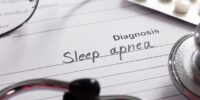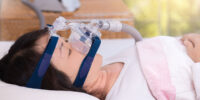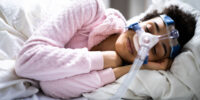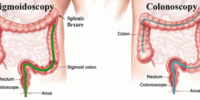How To Choose The Right Sleep Apnea Mask Or Device?
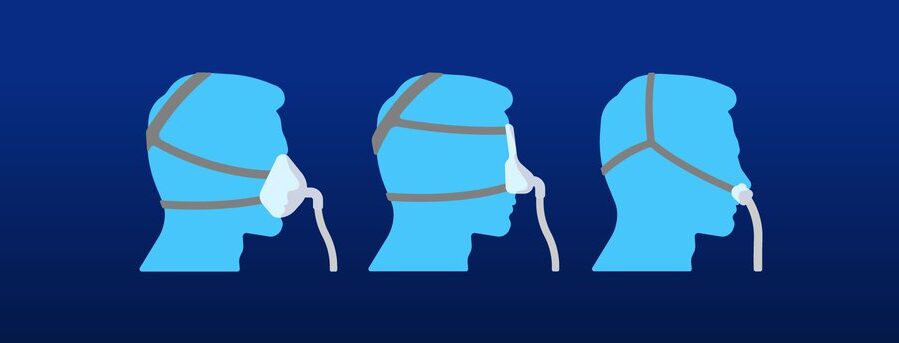
Sleep apnea is a common sleep disorder that affects millions of people worldwide. It is characterized by interruptions in breathing during sleep, leading to poor sleep quality and various health issues. One effective treatment for sleep apnea is the use of masks or devices that help maintain an open airway and facilitate proper breathing.
Choosing the right sleep apnea mask or device is crucial for ensuring comfort, effectiveness, and adherence to treatment. This article aims to provide objective guidance on how to select the most suitable mask or device for individuals with sleep apnea. It emphasizes the importance of understanding one’s sleep apnea needs, consulting healthcare professionals, researching different options, considering lifestyle and routine, trying before buying, seeking recommendations, checking insurance coverage and costs, and following up with regular maintenance and adjustments.
By following these steps, individuals can make informed decisions and improve their sleep apnea management.
Key Takeaways
- Understanding sleep apnea needs and consulting healthcare professionals is crucial for selecting the right sleep apnea mask or device.
- Researching different types of masks and devices, considering lifestyle and routine, and trying before buying are important steps in the selection process.
- Seeking recommendations from healthcare professionals and checking insurance coverage and costs can provide valuable insights and determine financial feasibility.
- Regular maintenance and adjustments, including proper cleaning and fit adjustments, are necessary for optimal comfort, effectiveness, and treatment outcomes.
Understand Your Sleep Apnea Needs
To make an informed choice about the most suitable sleep apnea mask or device, it is essential to have a comprehensive understanding of your individual sleep apnea needs.
Sleep apnea is a disorder characterized by pauses in breathing or shallow breaths during sleep, leading to poor sleep quality and daytime fatigue. There are different types of sleep apnea, such as obstructive sleep apnea, central sleep apnea, and complex sleep apnea syndrome. Each type requires a unique approach to treatment.
Therefore, it is crucial to consult with a healthcare professional who can conduct a thorough evaluation and diagnose the specific type and severity of your sleep apnea. This evaluation may involve a sleep study, which can help determine the appropriate treatment options, including the choice of a suitable sleep apnea mask or device.
By understanding your sleep apnea needs, you can ensure that you select the most effective and comfortable solution for your condition.
Consult with a Healthcare Professional
Consultation with a healthcare professional is crucial when selecting an appropriate mask or device for managing sleep apnea, as their expertise and knowledge can provide valuable guidance and ensure optimal treatment outcomes.
Sleep apnea is a complex disorder with various severity levels and individual needs. By consulting with a healthcare professional, individuals can receive a comprehensive assessment that takes into account their specific sleep apnea symptoms, medical history, and lifestyle factors.
Healthcare professionals can offer personalized recommendations based on the severity of the condition, the type of sleep apnea, and the individual’s comfort preferences. They can also provide information on the different types of masks and devices available, such as continuous positive airway pressure (CPAP) machines, nasal masks, or oral appliances.
Additionally, healthcare professionals can monitor the progress and make necessary adjustments to the treatment plan, ensuring that the chosen mask or device remains effective over time.
Research Different Types of Masks and Devices
By exploring various options available, individuals can gain knowledge about the different types of masks and devices used for managing sleep apnea. Researching different types of masks and devices is an important step in choosing the right one that suits individual needs.
There are several types of masks available, including nasal masks, full face masks, and nasal pillows. Each mask type has its own advantages and disadvantages, such as comfort, ease of use, and effectiveness in providing continuous positive airway pressure (CPAP).
Similarly, different devices, such as CPAP machines, BiPAP machines, and APAP machines, offer varying features and functionalities. It is essential to assess factors such as mask fit, noise level, pressure settings, and humidification options when considering different options.
Additionally, reading reviews and consulting with healthcare professionals can provide valuable insights to make an informed decision.
Consider Your Lifestyle and Daily Routine
Considering one’s lifestyle and daily routine is crucial when selecting a suitable solution for managing sleep apnea. Here are four key factors to consider in order to choose the right sleep apnea mask or device:
- Sleeping position: If you tend to sleep on your back, a mask with straps that keep your mouth closed may be beneficial. For side sleepers, nasal pillows or nasal masks that allow for a clear airflow can be more comfortable.
- Activity level: If you lead an active lifestyle or participate in activities that require a lot of movement, a lightweight and compact mask or device can provide better freedom of movement.
- Maintenance requirements: Some masks and devices require regular cleaning and maintenance. Consider your willingness and ability to commit to these tasks when choosing a device.
- Noise level: Some masks and devices produce noise, which can be disruptive to sleep. If noise sensitivity is a concern, opt for a quieter option.
Taking these factors into account can help you select a sleep apnea mask or device that aligns with your lifestyle and daily routine, improving your overall sleep quality and managing your condition effectively.
Try Before You Buy
To ensure optimal comfort and effectiveness, it is important to test out different sleep apnea solutions before making a purchase. Trying out different masks or devices allows individuals to determine which option fits best with their individual needs and preferences.
This trial period enables users to assess factors such as comfort, fit, and ease of use. It is recommended to try different types of masks, such as nasal masks, full-face masks, or nasal pillows, to identify the most suitable option. Additionally, individuals should consider their sleeping positions and whether the mask stays securely in place throughout the night.
By trying out different sleep apnea masks or devices, individuals can make an informed decision and select the right solution that promotes better sleep quality and overall well-being.
Seek Recommendations and Read Reviews
Seeking recommendations from healthcare professionals and reading reviews from other users can provide valuable insights into the effectiveness and usability of different sleep apnea solutions.
Healthcare professionals, such as sleep specialists or respiratory therapists, have extensive knowledge and experience in dealing with sleep apnea patients. Their recommendations can help individuals make informed decisions based on their specific needs and conditions.
Additionally, reading reviews from other users who have already tried different sleep apnea masks or devices can offer a firsthand perspective on their effectiveness and comfort. These reviews often highlight the pros and cons of each product, providing useful information for potential buyers.
By seeking recommendations and reading reviews, individuals can gather information to make a more informed choice and increase their chances of finding the right sleep apnea mask or device for their needs.
Check Insurance Coverage and Costs
Insurance coverage and costs should be checked to determine the financial feasibility of different treatment options for sleep apnea. This step is crucial as it allows individuals to make informed decisions about their healthcare choices.
When considering sleep apnea masks or devices, it is important to review one’s insurance policy to understand what is covered and what costs may be incurred. Some insurance plans may fully or partially cover certain types of masks or devices, while others may have limitations or require prior authorization.
Additionally, individuals should consider the cost of ongoing maintenance and replacement parts, as these expenses can add up over time.
By thoroughly examining insurance coverage and costs, individuals can make choices that align with their financial situation and ensure the best treatment for their sleep apnea.
- Sub-list 1:
- Review insurance policy
- Understand coverage limitations
- Sub-list 2:
- Consider ongoing maintenance costs
- Evaluate replacement part expenses
Follow Up with Regular Maintenance and Adjustments
After checking insurance coverage and costs for a sleep apnea mask or device, the next step is to follow up with regular maintenance and adjustments. This is crucial in ensuring the device functions properly and provides effective treatment for sleep apnea. Regular maintenance includes cleaning the mask and device according to the manufacturer’s instructions to prevent the buildup of bacteria and other contaminants. Additionally, adjustments may be necessary to ensure a comfortable fit and optimal air pressure delivery. These adjustments can be made by a sleep specialist or respiratory therapist who can assess the effectiveness of the device and make necessary changes. By following up with regular maintenance and adjustments, individuals can maximize the benefits of their sleep apnea mask or device and improve their sleep quality.
| Benefits of Regular Maintenance and Adjustments | Importance | |||
|---|---|---|---|---|
| Prevents bacterial contamination | High | |||
| Ensures a comfortable fit | Medium | |||
| Optimizes air pressure delivery | High | |||
| Improves sleep quality | High | |||
| Maximizes benefits of the device | High | Enhances overall respiratory health | High |
Frequently Asked Questions
Are there any alternative treatments or therapies for sleep apnea besides using a mask or device?
Alternative treatments and therapies for sleep apnea include lifestyle changes (e.g., weight loss, exercise), positional therapy, oral appliances, and surgery. However, the efficacy and suitability of these options may vary, and consultation with a healthcare professional is recommended.
How long does it typically take to adjust to using a sleep apnea mask or device?
The adjustment period for using a sleep apnea mask or device varies among individuals. Some may adapt quickly within a few nights, while others may take several weeks to adjust to the mask or device.
Can I use a sleep apnea mask or device if I have other medical conditions or allergies?
Individuals with medical conditions or allergies should consult a healthcare professional before using a sleep apnea mask or device. This is essential to ensure the device is safe and appropriate, and to address any potential interactions or contraindications with existing medical conditions or allergies.
Are there any lifestyle changes or habits that can complement the use of a sleep apnea mask or device?
Lifestyle changes and habits can complement the use of a sleep apnea mask or device. These may include maintaining a healthy weight, avoiding alcohol and sedatives, sleeping on your side, and keeping a regular sleep schedule.
What should I do if I experience discomfort or difficulty breathing while using a sleep apnea mask or device?
If an individual experiences discomfort or difficulty breathing while using a sleep apnea mask or device, it is important to consult with a healthcare professional for proper evaluation and adjustment of the mask or device to ensure optimal comfort and effectiveness.

